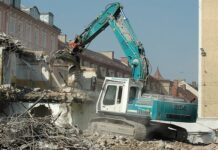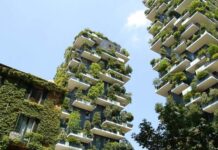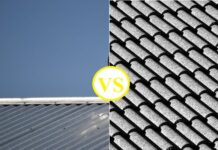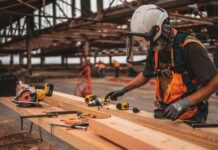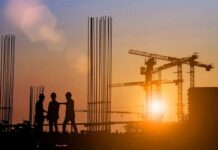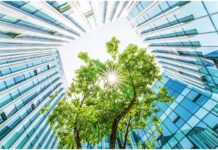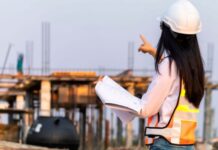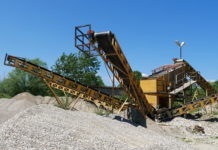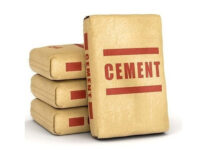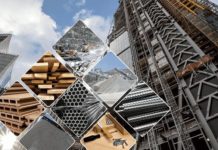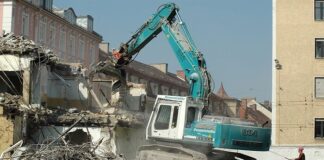Skanska says that its new office building in Yorkshire is its greenest-ever project in the UK.
Skanska’s Bentley Works office building
Skanska says that the re-building of its Bentley Works facility in Doncaster has resulted in ‘facilities that have a near-zero impact on the environment’.
During the construction phase no hazardous materials were used and zero waste was sent to landfill.
The facilities will deliver net zero primary energy performance, making them ‘deep green’ as defined by the Skanska Color Palette. The green features include:
- Maximum natural light and cooling
- Solar panels to generate energy
- Dual-fuel biomass heating system – using waste oil from machinery
- Low-water-use fixtures and fittings
- Rainwater harvesting – used to cool fan-coil units and rig wash
- Sustainable surface water drainage system
- Landscape features
- Sustainably sourced materials
- LED lighting.
A ‘deep green’ project is one that achieves zero environmental impact on at least three of the six core areas covering energy, carbon, materials and water:
- net zero primary energy
- near-zero carbon in construction
- zero waste
- zero hazardous materials
- zero unsustainable materials
- net zero water for buildings and zero portable water for civil and infrastructure construction.
With a history going back nearly 100 years, Bentley Works – Skanska UK’s northern hub – has been completely re-modelled, providing offices for employees with state-of-the-art fabrication and maintenance facilities.
Skanska UK president and CEO Mike Putnam said: “At Skanska, construction with a near-zero environmental impact has been a vision of ours for a number of years. Bentley Works has turned that vision into reality and sets the standard for future projects.
“By drawing on our knowledge and experience from across Skanska, we have been able to incorporate a host of sustainable features into the design and build of Bentley, driving down occupancy costs and creating a green legacy for the future.”



